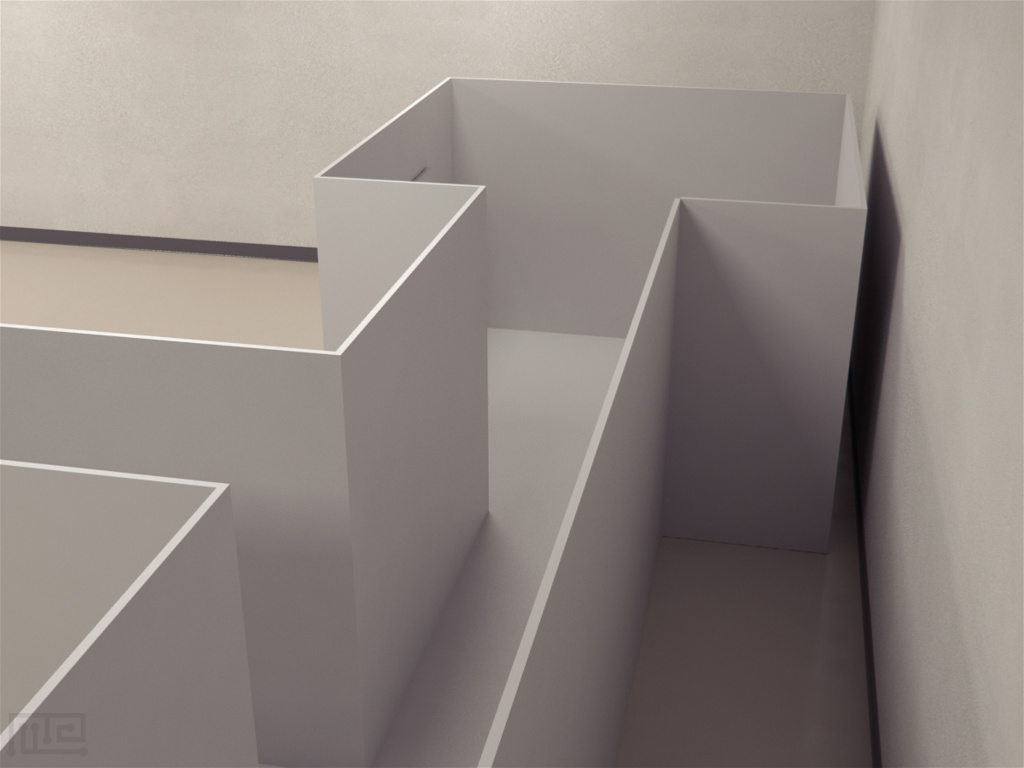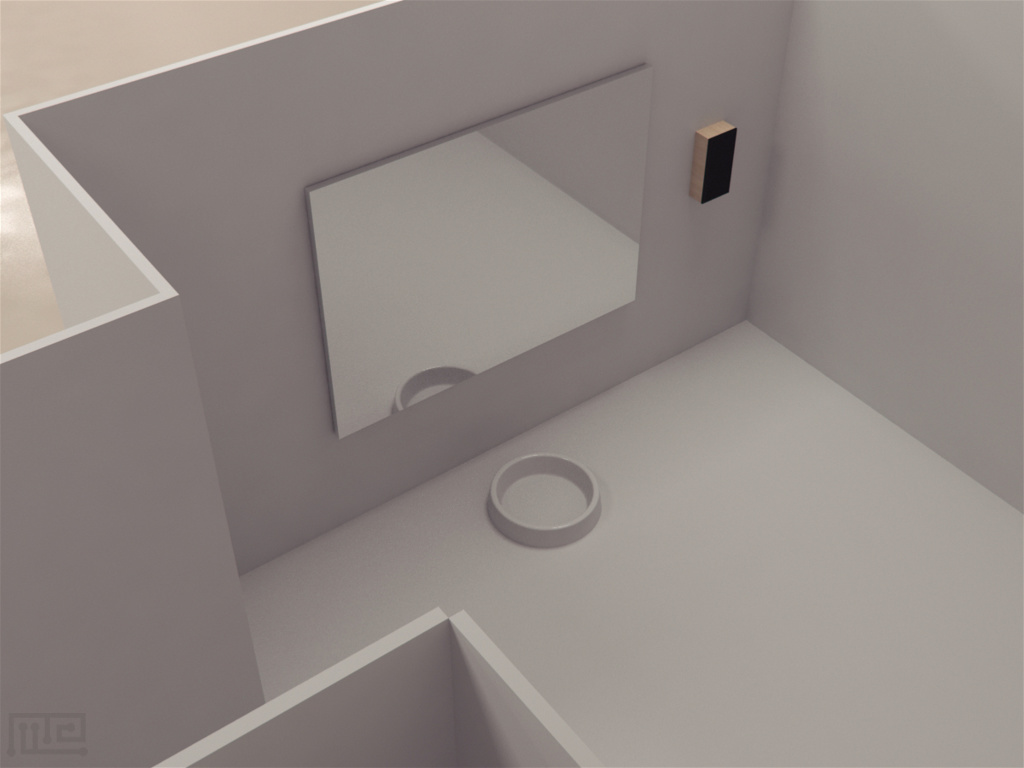The sentinel use of the T Maze for sheep was to investigate the effect of periconceptional undernutrition in sheep on behavioral and reproductive aspects of the offspring. The MazeEngineers Sheep T maze comes with all the parts to assemble on site to minimize shipping cost. Multiple colors available upon request.
Price & Dimensions
Sheep
$ 3490
One maze- Start Box Width: 2 meters
- Start Box Length: 2 meters
- T corridor Length: 2 meters
- T corridor Width: 0.8 meters
- T arm Length: 1.65 meters
- T arm Width: 1.65 meters
- Height: 1.4 meters
- Mirror: 70x30cm
Documentation
Introduction
The sheep T-maze is used for evaluating cognitive behavior, decision-making ability, and spatial learning in sheep. The sheep T-maze is an adaptation of the T-maze that is used for studying memory and learning in rodents. The T-maze also includes sources of social and sound cues in the goal arm to stimulate cognition in subjects. The apparatus can be applied in different experimental scenarios ranging from pre-adolescent brain development to adult foraging strategies depending upon the use of reinforcements.
Sheep possess a fine visual discrimination ability between colors, objects, and individuals. In order to analyze the role of visual stimuli in spatial mapping and object recognition, the sheep T-maze is provided with a mirror. When sheep see themselves in the mirror, they consider their image as an alien that significantly decreases their endocrine level and influence their behavior to isolation (Franklin & Hutson, 1982). The behavior of sheep in response to audio cues varies among different species. For example, the Dalesbred breed was able to discriminate between human and sheep sounds whereas the Clun Forest breed could not distinguish among different audio cues in a discrimination task (Kendrick et al., 1995). In order to analyze the impact of audio cues on cognitive functions, the sheep T-maze is also provided with a sound source
The sheep T-maze is a T shaped apparatus consisting of a right and left arm. The longitudinal arm of the T-corridor is connected with a start box. The presence of the start box helps in reducing fear and stress in subjects due to novelty. The sound source delivers sound cue, whereas the mirror acts as social stimuli for the subjects in the target zone. Other T-mazes and their modifications used for testing of cognitive functions of different species include the rodent Y-maze, Pig T Maze, Zebrafish T Maze, Zebrafish Y Maze, and Salmon Y Maze.
Apparatus and Equipment
The T-maze consists of a 0.7 m wide and 4 m long longitudinal arm connected with a 2 x 2 m start box (isolation box) at one end. A guillotine door is present at the intersection of the start box and longitudinal arm of the T-corridor to control the subject movement. The opposite end of the arm divides into a right and left side giving it the ‘T’ shape. Each side of the T corridor is 0.8 m linked with a 1.65 x 1.65 m goal box on both sides. A specific area is designated in the left arm called the target zone. The target zone is provided with a 70 x 30 cm mirror, a feeder, and a loudspeaker. The overall height of the maze is 1.4 m.
Training Protocol
Keep the subjects in the holding pen for 60 min before entering the T-maze. Clean the apparatus thoroughly before starting the trial. Maintain the hygiene of the apparatus by removing any traces of urine or feces found during the trials to avoid any disturbance cues. Keep the temperature and humidity of the test room constant throughout the experiment. Perform the task in a soundproof environment. An external tracking and recording systems such as Noldus Ethovision XT can be used with the sheep T-maze for observing the sheep’ behavior.
Auditory Cued Based T-maze Task
Hold the subject in the start box for 20 sec. Once the subject leaves the start box and enters the T-corridor, close the guillotine door. Play the recorded sounds as the auditory clue. Record the time needed by each subject in reaching the target arm. Allow the subject to explore the T-maze for 5 minutes.
Effect of periconceptional undernutrition on fetal brain development
Abecia et al. (2014) investigated the effect of periconceptional undernutrition on the reproductive cycle of the ewes and cognitive behavior of their offspring. Fertile Rasa Aragonesa ewes were maintained on diets that either met 1.5 times the daily requirement (controls, 0.8 kg barley straw and 0.55 kg pellets) or 0.5 time the daily requirement (low diet, 0.5 kg barley straw and 0.10 kg pellets) for 7 days. The reproductive performance of ewes was analyzed by evaluating the following reproductive parameters: fertility, prolificacy, fecundity, and pregnancy length. The low diet provided up to the 7th day of pregnancy caused a marked decrease in fecundity and prolificacy. The fertility rate in low diet group was also 10% less than the control group. The offspring of ewes from these two groups were used as subjects for different behavioral tests. For behavioral testing, lambs undertook an isolation test to assess stress and fear in novel environments. The isolation test results revealed that the lambs born from control group ewes spent more time walking, whereas the lambs from low diet group ewes found mostly standing. Novel object test was also performed on the same subjects. The test revealed no difference in both groups’ performances. The cognition and memory test was conducted in the sheep T-maze with sound and social cues. Lambs from undernourished dams displayed reduced physical activity as observed by the less number of areas covered in the T-maze. However, no significant performance difference could be observed in comparison to controls.
Evaluation of T-maze learning in weanling lambs
Johnson, Stanton, Goodlett, and Cudd (2012) evaluated the learning and memory abilities of weanling lambs of Suffolk ewes in a series of T-Maze tasks. These tasks included matching-to-place (MTP), non-matching-to-place (NMTP), position habit (PH), and position habit reversal (PHR). The T-maze allowed the subjects to choose between the two arms based on memory. Results from different tasks revealed that lambs showed improved performance during NMTP training (with an increased correct choice percentage from 48% to 95%) whereas a significant decrease in the number of correct choices was observed during MTP training. The percentage of correct responses increased from 60% to 100% during PH training without NMTP. The percentage of correct responses dropped to 0% on day 1 and significantly increased to 88% by day 5 in PHR training.
Data Analysis
Following parameters can be calculated by using sheep T-maze
- Latency to leave the start box
- Time spent in reaching target arm
- Number of areas traversed
- Time spent in the right arm
- Time spent in the left arm
Strengths and Limitations
Strengths
The sheep T-maze is a simple and time-efficient apparatus. It is highly adaptable according to the need of the experiment. The start box allows reduction of stress-induced by novelty and thus minimizes its effect on task performances. The addition of the guillotine door enables control of movement and introduction of delays into the task. The apparatus can be modified for use in advance research protocols by introducing positive and negative reinforcements. The presence of a sound source for auditory cue and mirror as a social cue motivate the subjects to present complex cognitive behaviors. The sheep T-maze does not require subject training prior to performing an experiment. It is a versatile apparatus and can be applied for a wide range of analytical procedures.
Limitations
Handling of sheep is critical in using sheep T-maze. Mishandling may induce result in stress or fear in subjects during task performance. Presence of unnecessary olfactory or visual cues and other lingering stimuli may also impact subject performance; therefore, proper cleaning of apparatus is essential. Factors such as age, gender, and strain may also contribute to task behavior. It is critical to ensure that the temperature and humidity are kept constant during the trials in the sheep T-maze.
Summary
- The sheep T-maze is used to analyze the cognitive functions, social interaction, learning and memory behavior in sheep.
- The target arm of the sheep T-maze contains a sound source for auditory cues and mirror for providing the social cue.
- The simple yet versatile design of the T-maze allows the creation of different experimental scenarios.
- Factors such as age, gender, and strain of the species can significantly impact the task performance.
- Mishandling or overtraining may induce stress in subjects; therefore, proper handling is necessary.
Reference
- Abecia, J. A., Casao, A., Pascual-Alonso, M., Lobón, S., Aguayo-Ulloa, L. A., Meikle, A., Maria, G. A. (2014). The effect of periconceptional undernutrition of sheep on the cognitive/emotional response and oocyte quality of offspring at 30 days of age. Journal of Developmental Origins of Health and Disease, 5(2), 79–87.
- Franklin, J.R. and Hutson, G.D. (1982). Experiments on attracting sheep to move along a laneway. III. Visual stimuli. Animal. Ethology., 8: 457-478.
- Johnson, T. B., Stanton, M. E., Goodlett, C. R., & Cudd, T. A. (2012). T-Maze Learning in Weanling Lambs. Developmental Psychobiology, 54(8), 785–797. doi:10.1002/dev.20624
- Kendrick, K. M., Khia Atkins, R.Hinton, M., Broad, K. D., Fabre-Nys, C., & Keverne, B. (1995). Facial and vocal discrimination in sheep. Animal Behaviour, 49(6), 1665-1676. doi:10.1016/0003-3472(95)90088-8
Abecia, J. A., Casao, A., Pascual-Alonso, M., Lobón, S., Aguayo-Ulloa, L. A., Meikle, A., Maria, G. A. (2014). The effect of periconceptional undernutrition of sheep on the cognitive/emotional response and oocyte quality of offspring at 30 days of age. Journal of Developmental Origins of Health and Disease, 5(02), 79–87. doi:10.1017/s2040174414000051




